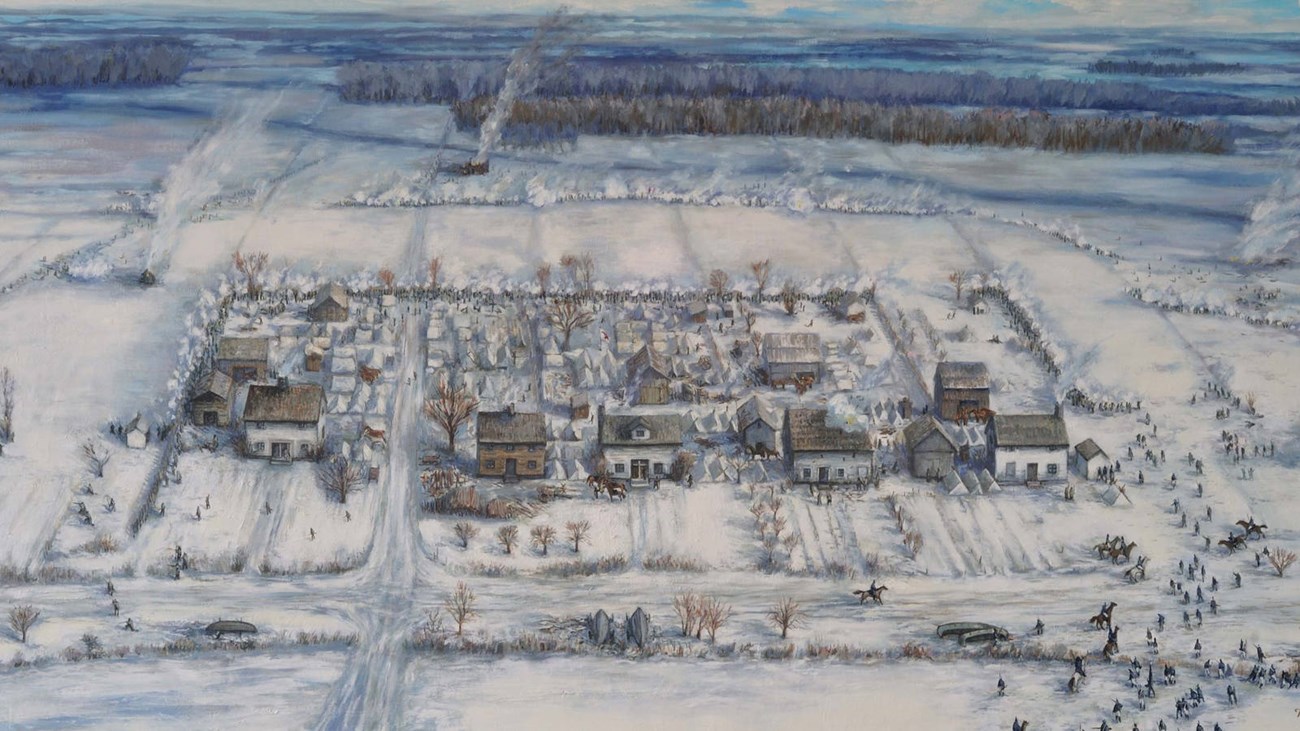Part of a series of articles titled 2022 Preservation Planning Grants Highlights.
Article
Michigan – Remembering the Raisin: Protecting River Raisin Battlefield Through Research and Collaboration

River Raisin National Battlefield Park | NPS Photo
Recipient: Regents of the University of Michigan
Amount: $107,321.00
In the morning hours of January 22, 1813, British musket and artillery fire broke the silence of the snow-covered fields surrounding the small community of Frenchtown. Strategically located near Detroit and the western edge of Lake Erie in southern Michigan, the American settlement had changed hands several times during the first year of the War of 1812. Recently liberated by an American force under General James Winchester, Frenchtown’s residents were again caught-up in a global contest over control of the seas and, more significantly at the local level, lands claimed by British Canada, the United States, and the first peoples who had inhabited the area for generations. Days before, when the American forces seized Frenchtown on January 18, Kentucky militia had killed and mutilated the bodies of wounded Native warrior allies—a brutal treatment not inflicted on British casualties. Now the Native and British allies were back with a vengeance, mounting a surprise attack and closing in on two sides of the town to overwhelm the American defensive line. As casualties mounted into the hundreds, Winchester convinced the remaining American troops to surrender under the promise of protection by the British commander, Colonel Henry Proctor. Proctor marched the captured Americans to imprisonment at Fort Malden on the Canadian side of Lake Erie but left the American wounded on the field. Native warriors returned to Frenchtown after Proctor’s withdrawal to revisit the earlier battle and killed the American wounded Proctor had left behind. For years, the rallying cry “Remember the Raisin!” inspired support for the war with a partial memory of events on the borderlands.
With support from a Preservation Planning Grant awarded by the National Park Service’s American Battlefield Protection Program, the Regents of the University of Michigan will lead two archeological field schools to investigate portions of the War of 1812 battlefield owned by the City of Monroe, Michigan. The University’s project builds on consultation with local partners, including the National Park Service’s adjacent River Raisin National Battlefield Park, to confirm the location of buildings at the Frenchtown settlement. Collaborative preservation planning to protect sites of conflict, indeed, takes a village!
Preservation Planning Grants are the American Battlefield Protection Program's broadest and most inclusive grant program, promoting the stewardship of battlefields and sites of armed conflict on American soil. In addition, the program administers three other grants: Battlefield Land Acquisition Grants, the newly authorized Battlefield Restoration and Battlefield Interpretation grant programs. This financial assistance generates community-driven stewardship of historic resources at the state, tribal and local levels.
Get Your Project Funded
Check out the American Battlefield Protection Program's website for more information about various grant offerings and eligibility.
Last updated: August 23, 2022
